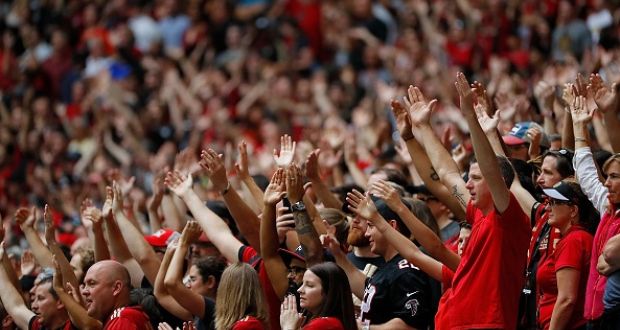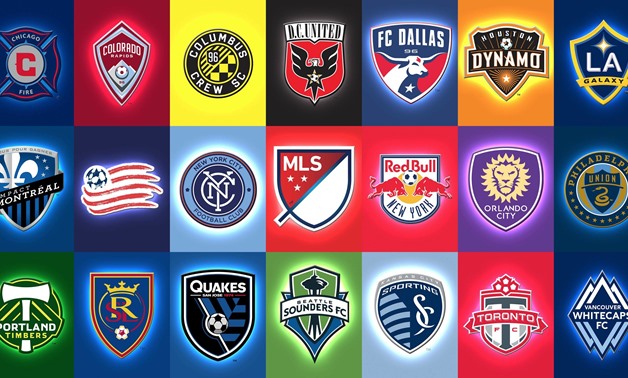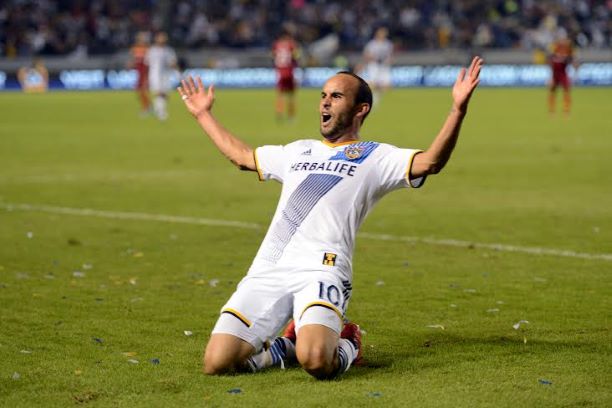Blame physics for Cristiano’s goal, not Hart and Kompany
Blame physics for Cristiano’s goal, not Hart and Kompany


By Thomas Ang
Cristiano Ronaldo scored a late goal to complete Real Madrid’s comeback for a win over Manchester City on Tuesday. There is no doubt about the importance of the goal, but in its wake there have been questions about how the ball managed to find its way past Kompany and Hart. Was it Kompany’s fault for ducking? Was it Hart’s fault for failing to save a shot that came so close to him? Was Cristiano lucky? Kompany’s response to the questions has been that the striker deserves full credit for the goal.

GIF of Cristiano’s goal in question, generously supplied by Josh Anderson
I’m not the biggest Cristiano fan (still won’t refer to him by only his last name), but the science suggests Kompany is correct. Cristiano Ronaldo’s shot changed its spin in mid-flight to produce a downward dip greater than possible through gravity alone. The shot should have been impossible to execute, and therefore nothing could have prepared either the defender or keeper for the sublime shot.
The trajectory changed so much, the ball might as well have taken a deflection off an invisible object. And it wasn’t luck: about 13 minutes into the match Cristiano used the same technique—you’ll see the same spin—but Higuain got a touch before it could really dip.
To understand just how difficult this kind of shot is to make, one needs to understand some basic physics. Not including wind, there are three factors that determine the flight of a football through the air (it’s a different story when the ball slides, rolls, or bounces on the ground). First, the foot strikes the ball causing an elastic collision: the ball deforms as the foot sinks into it and, in an attempt to regain its shape, the ball flies off the foot. This gives the ball some starting properties, like speed and direction, but then plays no further part. Second, gravity pulls the ball towards the ground, but has no effect on the horizontal motion of the ball. The final factor, and the one of interest here, is the effect of the air as it moves around the surface of the ball.
Air resistance slows down the football very slightly. On top of that, pockets of air with different pressure levels form on different sides of the ball causing it to move off the line of its initial direction. When a ball is hit with no spin, the seams and panels on the surface create seemingly random pressure differences around the ball, and you get a wobble effect. When the ball is hit with spin, however, this motion becomes predictable. The side of the ball that spins in the same direction the ball is moving, i.e. away from the kicker, generates more air pressure than the other side that’s coming back towards the kicker. The same science that explains an airplane’s lift tells us that the difference in pressure on either side of the ball results in a force that pushes the ball towards the low-pressure side.
For example, imagine you’re Roberto Carlos and you’re going to curl the ball around the right side of a French wall and have it hook back to the left after. You hit the right side of the ball with the outside of your left so it spins counter-clockwise when viewed from above. The air pressure generated by the panels as they round the three o’clock position is the higher than that generated by the panels as they round nine o’clock. So the ball gets pushed from three o’clock to nine o’clock (left), and comes back around the outside of the wall to find the inside of Barthez’s post.
If you’re David Beckham, you get the ball to spin on an angle with the inside of your right foot. As you watch the ball fly away from you, the high-pressure side is the top-right of the ball, and it moves towards the bottom-left. So you get a right-to-left curl and a dip.
Now back to Cristiano Ronaldo. His shot was spinning completely vertically so that the high pressure was directly above the ball pushing it downwards. Tennis players call this topspin. Footballers don’t have a name for it because we don’t do it. You have to strike through the top of the ball (somewhere above its centre) to make this happen, but if we do that we just drive the ball into the ground. It’s theoretically possible with a side-volley or a toe poke, but essentially uncontrollable in those circumstances.
Not only did Cristiano Ronaldo strike that ball from the ground, it initially rose! This implies he hit it below its centre! How did he get topspin when hitting the ball upwards? The only way I can think of is that he might have flicked through with his foot after the ball was already leaving his foot, to add the spin after giving the initial trajectory with that elastic collision previously mentioned. One more piece to add to the puzzle: if you watch the slow-motion replays carefully, you’ll see the ball leave his foot and then, only after a moment, suddenly reorient itself to have that spin. Beckham’s freekicks had a little bit of reorientation to get a bit of downward motion, but this is on a whole different scale.
This article is by Thomas Ang, who writes football fiction at Strange Bounce. You can follow him on twitter @FootballNovel and on his Tumblr Roar of the Faithful. Comments below please.







